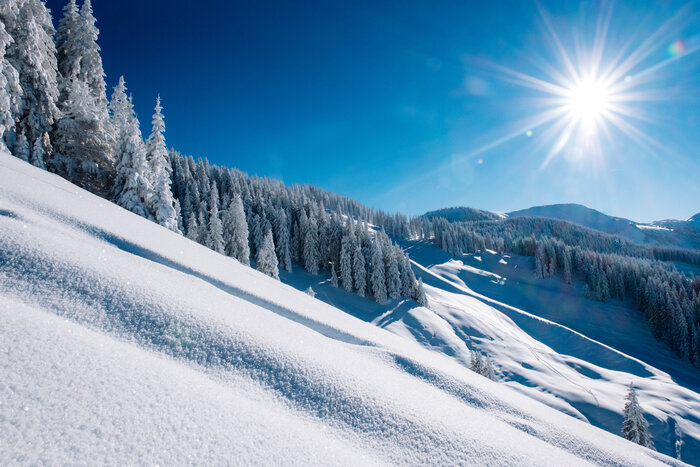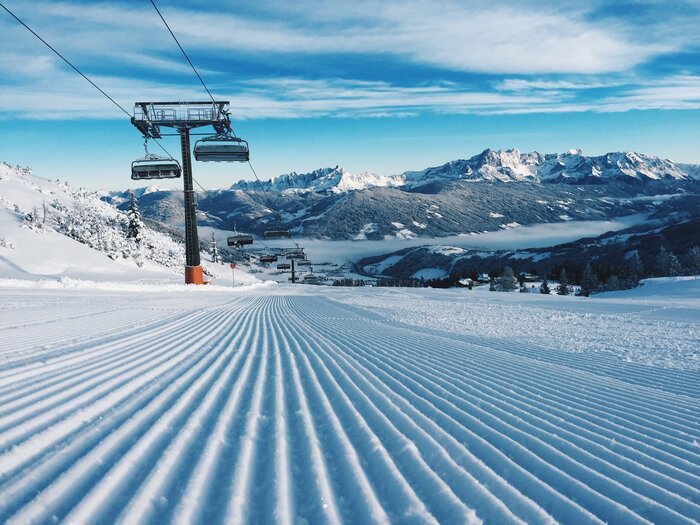Champagne powder
Like clouds on earth, fluffy and light as a feather, the powder snow makes the day of skiing even more perfect. No wonder that after a cold and snowy night everyone hurries to get to the mountain first, to leave their tracks in the powder. It is not without reason that fresh powder, also known as champagne powder, is called "the best snow in the world".
Wild snow
A dream – extremely loose fresh snow is also called wild snow. Is also very nice for powdering.

Firn is old snow, that doesn't sound that tingling at first, but it is typical for skiing in the sun and describes the soft layer that has been warmed up by the first warm spring rays. This snow is what makes spring skiing so popular and is certainly the second most popular type of snow after "Champagne Powder". The snow thickens strongly due to melting and freezing processes. This is the precursor to glacier ice snow.
If the firn compacts more and more, glacier ice snow is created over longer periods of time.
This is the name given to the thin, superficial layer of ice that reflects in the sun.
Nomen est omen – Griesel is relatet to the word “Grieß” (German word for Semolina/grit). It’s a grainy, gritty snow that keeps freezing.
When snow is soaked on the surface and then freezes again, it is called crust. Also a spring phenomenon.
Wind crust occurs when warm, moist wind forms a thin crust on the surface of the snow.
Sticky snow is the ideal snow for building a snowman. It's more humid and heavier and sticks together under pressure.
Damp snow is very wet and therefore heavy. Especially in alpinism, very wet old snow is referred to as slushy. In the warm rays of the sun in the spring months of March and April, the snow on the slopes also becomes slushy in the afternoon. Many skiers and snowboarders love to cruise through there. But – beware, for beginners it’s pretty hard to handle!

Artificial snow
Even if the last winters were snowy, we can have a perfect skiing experience thanks to the artificial snow despite little rainfall and thus guarantee safety for perfect slope conditions. Artificial snow has a higher waterproofness compared to natural snow, which means that it is much more robust against high temperatures, which in turn leads to longer ski seasons.
However, there is nothing artificial about artificial snow. The name suggests it, but the snow cannons only blow 100% pure water, without any artificial additions! After all, we want to have a functioning alpine pasture all year round.
The real artists are our heroes of the night, snow masters and drivers of the snow groomers. The art therefore is to make sure to have perfect slopes, despite all of these different snow compositions and weather conditions, to guarantee safety, fun and joy.
In Ski amadé 90% of the 760 kilometers of slopes are coverable with artificial snow ;)


